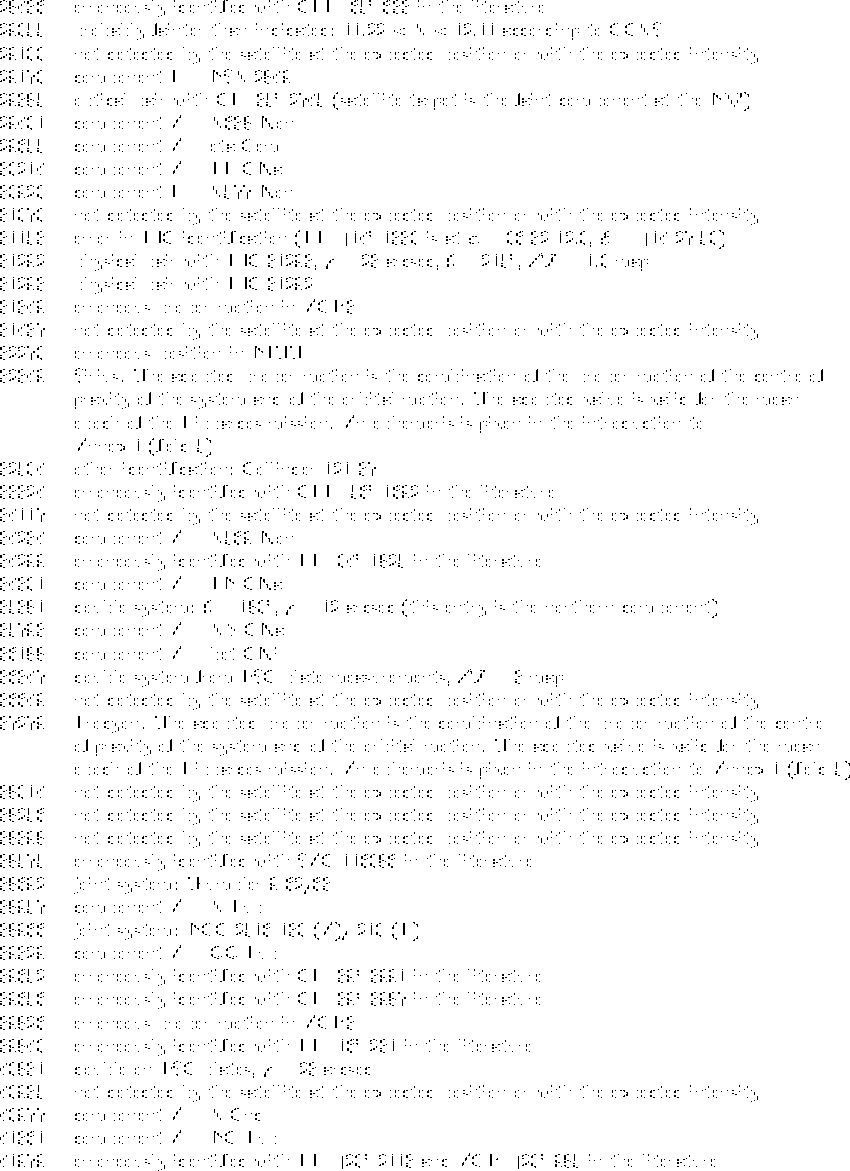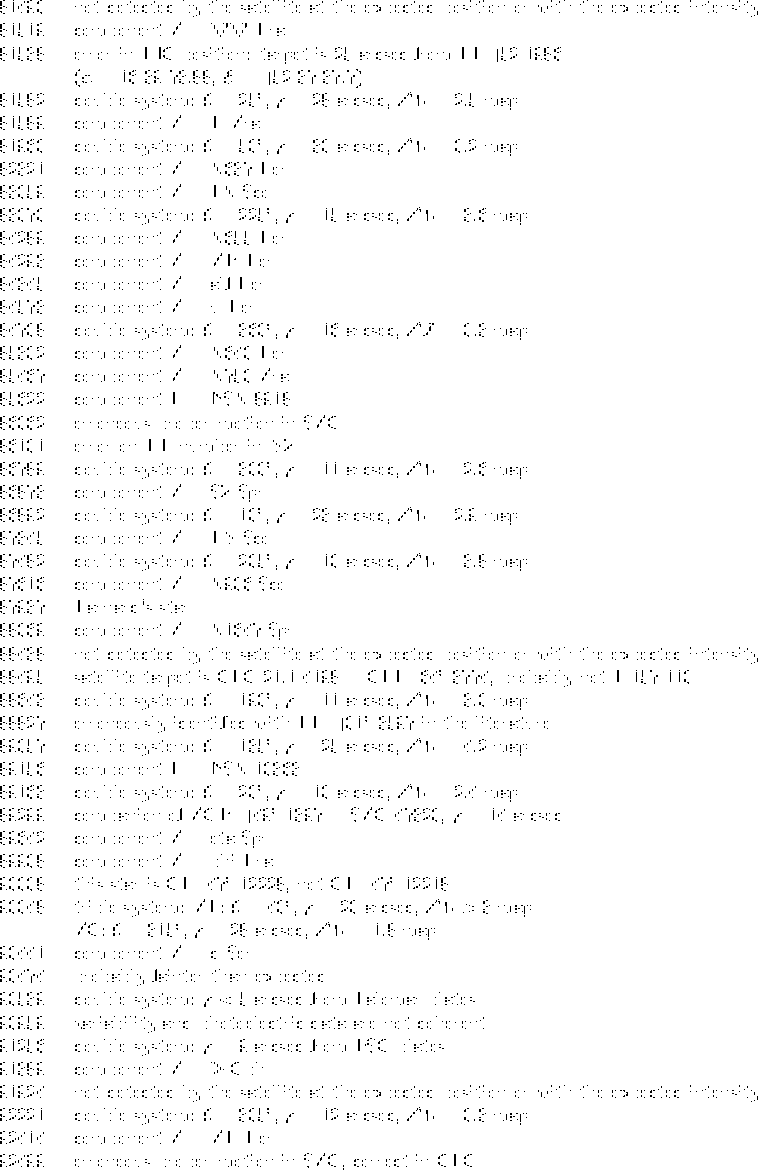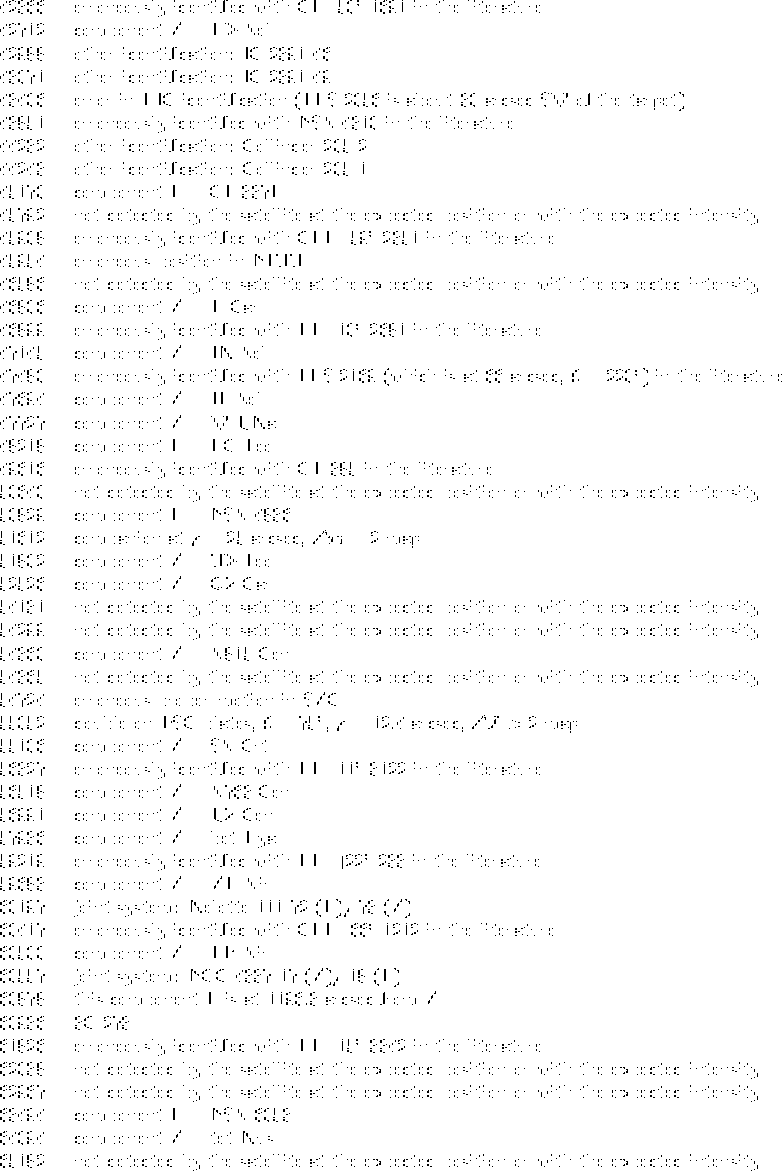 and
and  have
been obtained from the orbital elements given by van den Bos (1960) for
Sirius, by Strand (1951) for Procyon, and by Heintz (1960)
for
have
been obtained from the orbital elements given by van den Bos (1960) for
Sirius, by Strand (1951) for Procyon, and by Heintz (1960)
for  Centauri.
Centauri.
The declination is given for equinox J2000.0. The epoch is J2000.0, or that of the original measurement if no proper motion is available. The epoch is not given in Annex 1.
[]The positions in Annex 1 are taken from the CCDM (see Introduction), and are not necessarily identical to those given in the Main Catalogue. The `absolute' positions in the CCDM are themselves taken from various sources, but primarily from the CDA (Catalogue des Données Astrométriques, Bastian & Lederle 1985; Jahreiß 1989). In addition, specific astrometric observations were organised within the framework of a dedicated Working Group of the INCA Consortium. Numerous institutes participated in these observations: Observatoire Royal de Belgique, Bonn, Bordeaux, Brera, and Turin Observatories, Cambridge, La Plata, Leningrad, Lille and München Universities with observations also made at ESO and at La Palma. New data have been included, first into the CCDM, and then into the INCA data base, after systematic checks of their internal consistency. Some positions are also taken from the Guide Star Catalog (Lasker et al. 1990). Further details of the INCA Consortium's preparatory work on double and multiple stars are given by Dommanget (1983, 1985, 1988, 1989).
Preference has always been given to source catalogues or new observations giving positions for the largest number of components, so as to maximise the internal consistency of the data on the system. This explains some of the discrepancies with the main catalogue where updated data (related to the components observed by Hipparcos) have been included, even though these were available for only some of the components of a system.
For systems closer than 3 arcsec, the same position and proper
motion are adopted for all components, unless separate data have been
explicitly published. For larger separations, when no absolute position
was available for the secondary component(s), these have been computed
from the absolute position of the primary and the relative position of
the secondary. In the case of orbital pairs, the same proper motion is
also adopted for all components, even for separations larger than 3
arcsec, except for a few cases with large separations but slow relative
motions. Ephemerides are given below
for three exceptional cases. The
values of  and
and  have
been obtained from the orbital elements given by van den Bos (1960) for
Sirius, by Strand (1951) for Procyon, and by Heintz (1960)
for
have
been obtained from the orbital elements given by van den Bos (1960) for
Sirius, by Strand (1951) for Procyon, and by Heintz (1960)
for  Centauri.
Centauri.